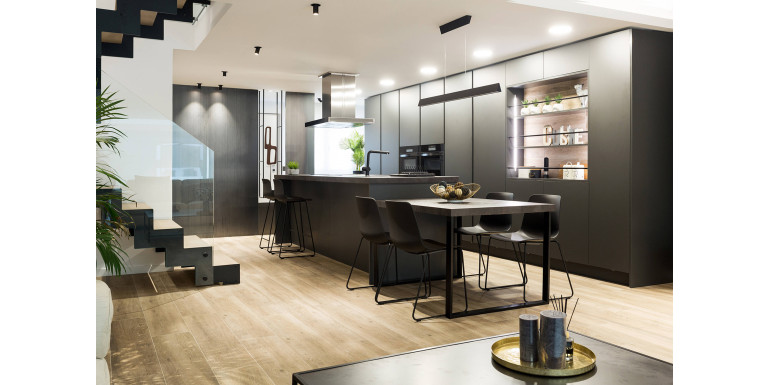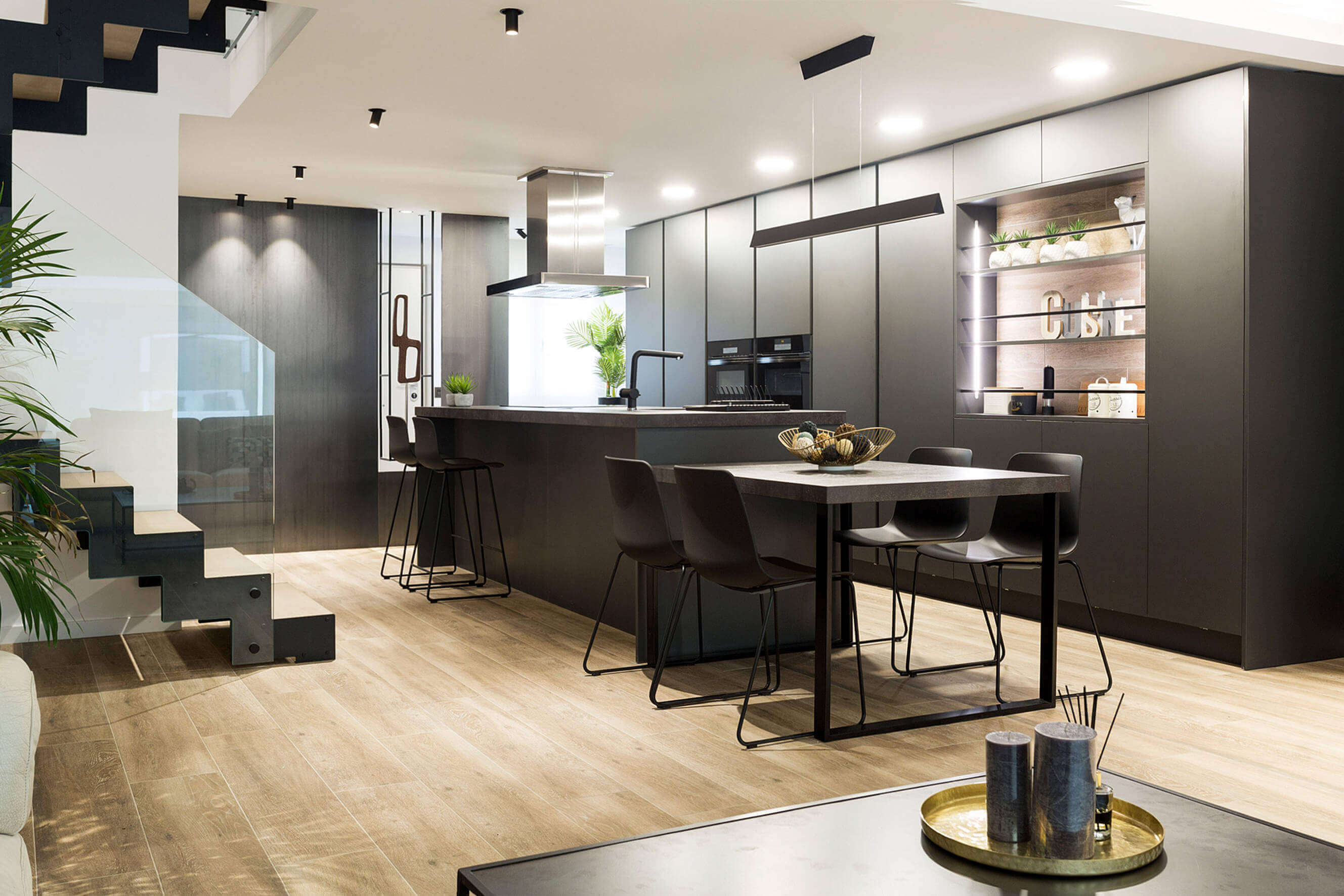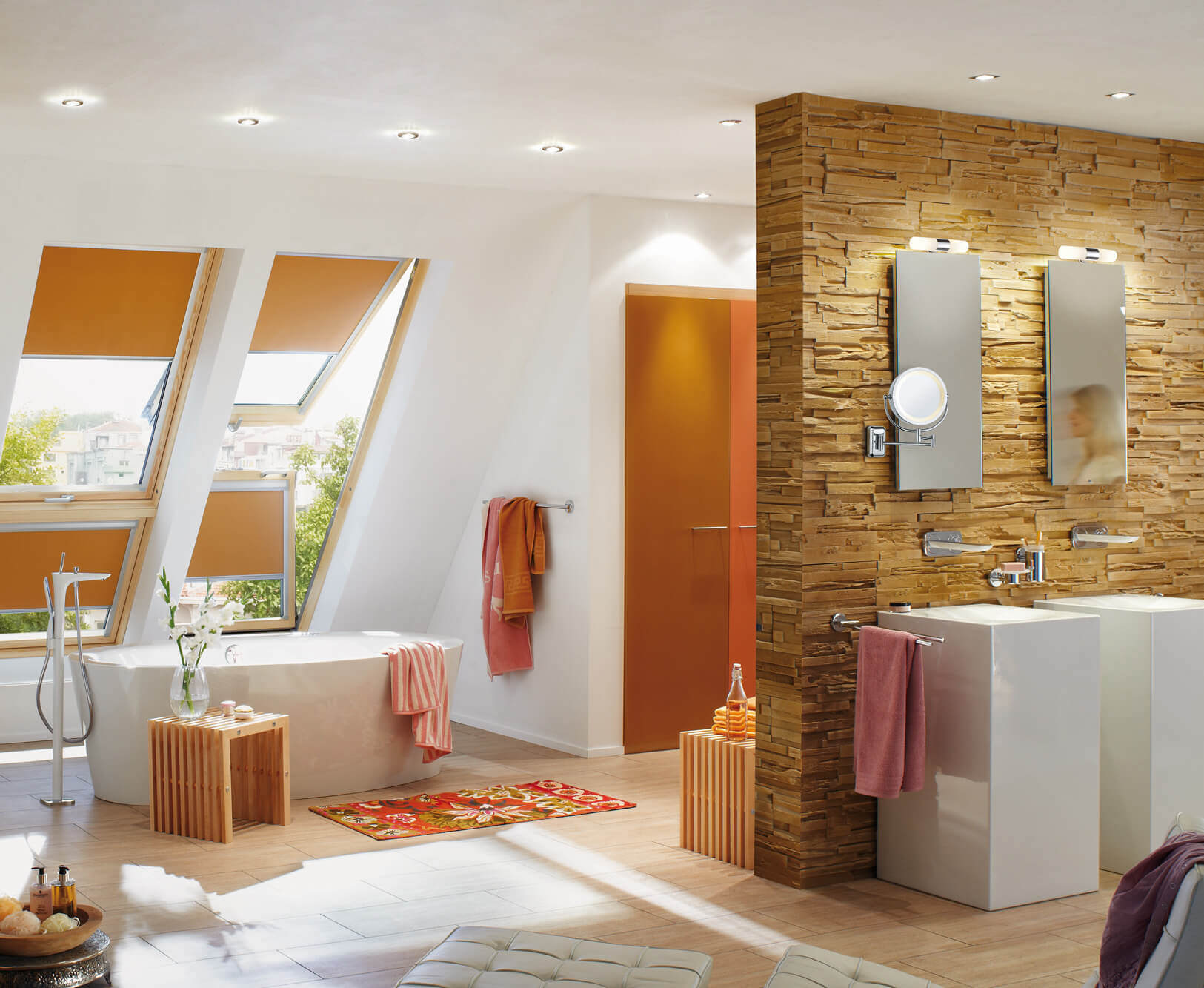-
How to create zone lighting using magnetic tracks? 12/08/2025 14:04:06How to choose the right light color in track lighting? 12/01/2025 14:46:21What is indirect light and why is it fashionable? 11/19/2025 18:37:52How and where to arrange the lamps at home - lighting planning05/06/2020 13:51:42

Properly designed lighting is very important in any interior. When you are at the stage of furnishing a new home or apartment, or you are renovating, it's worth learning how to plan lighting. We advise on how to do it and what to look for!
Lighting project - when to do it?
Preparing the lighting project is worth starting before finishing work, which will allow you to choose the right places for the installation of lighting points. Along with the preparation of the lighting design, an interior design should also be prepared, which will allow the selection of appropriate types of lighting products for the purpose of the rooms and their proper placement.
Lighting design - types of light
Lighting in the interior can be divided into 3 main types depending on its location, as well as the role it plays. There are:
1. General lighting - its task is to illuminate the entire room, which is why it is most often mounted in a central point on the ceiling, in the case of larger rooms at several points to illuminate the largest possible space.
2. Decorative lighting - this is lighting that aims to diversify the appearance of the room, highlighting its specific parts, it can also perform a practical function, e.g. to illuminate walls, paintings, etc.
3. Work lighting - practical lighting that is designed to illuminate important points, for example, mirror lighting, kitchen islands, study desks, dining table.
Living room lighting design
The living room is a room where we spend a lot of time every day. It has various functions, for example, we use to watch TV, read books, meet with loved ones, relax. Living room lighting should also follow these functions. One lamp in the living room is not enough, so when designing this interior we should consider several light sources to illuminate the entire room.
Examples of lighting in the living room:
general lighting - ceiling lamp in the form of a modern LED ceiling, eyelets, longitudinal LED lines, you can also use busbars with spotlights throughout the ceiling - it works in smaller salons, otherwise it is worth separating them for lighting of the seating and dining area
lamp above the seating area - at the seating set and coffee table, for example a hanging lamp such as a chandelier or a ceiling or LED light eyes
lamp above the dining room - lighting above the table will give an aesthetic effect, for example, it can be a low suspended LED hanging lamp with an elongated lampshade or several decorative lampshades
lighting placed next to the TV set to reduce contrast and thus improve comfort for the eyes - for example, LED wall lamps, floor lamp, LED strips behind the TV
additional lighting at the seating set - a standing lamp that will be able to give an additional, point light, e.g. for reading
decorative lighting - lighting of furniture in the living room, LED eyelets or strips, lighting of wall decorations with sconces.jpg)
Kitchen lighting design
Very often, we do not attach much importance to lighting in the kitchen. This is a mistake, because it is in this room that it is very important to create a practical lighting system.
Lighting in the kitchen should combine functionality and aesthetics. Lighting of worktops is key here to make meals easier to clean and clean. Therefore, using only one main light source centrally located in the ceiling will be insufficient. We can then block the access of light to the tops with our body and create a shadow on the workspace. For lighting the kitchen or dining room we mostly use the same lamps as for the living room.
Examples of lighting in the kitchen:
general lighting in the kitchen - a hanging ceiling lamp, a ceiling or light eyes in a suspended ceiling - can be placed above the table, if the kitchen is to have a dining area, and when there is an island in the kitchen, the light can also be located directly above it
lighting of countertops - in the form of eyelets, tapes or lamps placed under the upper cabinets, lamps mounted on the upper cabinets or lamps in the ceiling - then pay special attention to the depth of the cabinets so that they do not obstruct the light shaft
lighting of kitchen furniture - placed inside glass cabinets will give an aesthetic effect
Bathroom lighting design
Also in this case it is necessary to skillfully combine the main, decorative and work lights. Even when the bathroom is small, we should not give up placing several light sources in it. In wet rooms it is best to use bathroom lamps with high IP
Examples of lighting in the bathroom:
general light - ceiling, spotlights, light eyes, LED strips, hanging lamps that work well in larger bathrooms - they allow general lighting of the entire room
mirror lighting - sconces (wall lamps) or illuminated mirror equipped with its own light source
decorative lighting - LED strips placed next to furniture, in niches to emphasize the arrangement of the bathroom
Lighting design - light color
Light sources can offer different types of light colors, which are also referred to as color temperature. They are served in Kelvin - K. The selection of the right color temperature of lighting is of great importance for the appearance of the arrangement, as well as for our well-being.
The color of the light can be divided into 3 main categories, namely:
1. Warm white color - below 3300K - yellowish shade, similar to candle light, standard incandescent bulb.
2. The neutral white color - from 4000K to 5000K - is between warm and cool color, therefore it is universally applicable. It has the color closest to white.
3. Cool (cold) white color - above 5300K - gives a bluish shade, similar to daylight, rarely used in basic lighting of residential interiors.
Bulbs that give a warm color of light are mainly recommended for use in living rooms, bedrooms. They create a pleasant effect for the eye, conducive to rest. They fit perfectly into interiors arranged with an emphasis on hygge - coziness.
In turn, natural color is recommended for use in workplaces, science, because it promotes concentration. It also prevents excessive eye strain and has universal application.
It is important not to mix light colors in one lamp or room, because the effect will not be aesthetic.
Lighting design - practical tips
At the entrance to the building, in squares, corridors and staircases, you can install lighting equipped with a motion sensor that will automatically turn the lights on and off.
Placing a small lamp standing on a dresser or window sill will create an intimate atmosphere in the interior.
LED lighting as well as selected types of lamps can be operated using a wireless remote control.
The lamp hung low over the table will create a fashionable interior design.
Placing the light source next to or behind the TV or computer screen will improve eye comfort in a dark interior.
Thus, independent preparation of stylish lighting at home or in the apartment does not have to be complicated. Good luck!
Menu
- +Outdoor lighting
- +Indoor lighting
- +Wall LED lamps
- Line light LED
- LED profiles ALU
- +Track system
- +LED ceiling lamps, hanging and surface-mounted
- +Ceiling covers
- Starry Sky
- +LED plafonds
- LED recessed downlights
- +Hanging lamps LED
- Ceiling spotlights and spots
- Ceiling fans LED
- LED lights for paintings
- +LED floor lamps
- LED table and desk lamps
- Living room
- Bedroom
- Dining room
- LED bathroom lighting
- LED kitchen lighting
- LED stairs lighting
- +LED bulbs
- All manufacturers
- Prices drop
- New Products
- Bestseller




